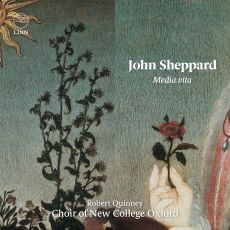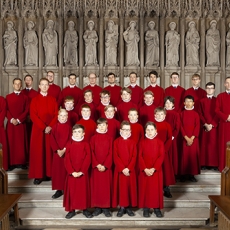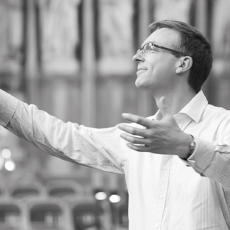Choir of New College Oxford & Robert Quinney - Sheppard: Media vita - MusicWeb International
Wait for a new recording of John Sheppard’s Media vita and all of a sudden they seem to be popping up all over the place, with Alamire’s EP release on Inventa Records being a leading choice if this is the only work on your Sheppard shopping list. The Choir of New College Oxford boasts a tradition that predates the Reformation, and while Robert Quinney makes no claim to know how choirs would have sounded in Sheppard’s time, his voices “may thus be considered at least as appropriate a medium for his music as a fully professional choir or consort.” In his performance notes, Quinney describes the distribution of voices as “somewhat experimental”, but in general the effects you may or may not notice include using fewer boys voices; only three or four to a part “and thus some way from the classic English ‘blended’ timbre of around eighteen trebles sharing a single line.” Balance is by no means a problem however, with the treble rising above the general texture with no difficulty in this recording. Pitch is also raised to a standard of A=466, a semitone above what has become accepted these days as ‘concert pitch’ of around A=440. This in isolation may not be noticeable, but does follow mid-sixteenth century practise and creates a brighter sound in general.
Looking first at Media vita as the main work in this programme, and once you have become used to the boy’s voices (which assumes your having become acclimatised to female trebles) this performance grows into something that does deliver a glorious effect, despite some reservations. Sheppard’s music here harks back to pre-Reformation polyphony, and so there will always be a richness to the texture, with parts rising and falling, drawing the ear towards different places as the text evolves. This to my ear is the only disadvantage of ‘non-blended’ voices in the treble, as this part steps outside of the overall vocal sonorities of the choir, rather than advancing and receding as do the others.
Media vita is by no means the only work on this substantial programme, which includes four world première recordings. Robert Quinney doesn’t go into great detail about these pieces in his booklet, but divides them into those based on a cantus firmus “in which a plainchant melody moves in semibreves, above, beneath or in the middle of a polyphonic texture”, and those that are freed from this basis and are “strikingly more ‘modern’ than the chant-based pieces.” It is not hard to train your ears to hear these differences, but the “spacious, even cosmic dimensions” of Sheppard’s music are apparent in both, and whatever your attraction to this specific composer or Renaissance music in general, you will want to hear these première recordings.


